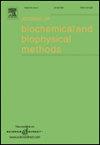An easy-to-use practical method to measure coincidence in the flow cytometer—The case of platelet–granulocyte complex determination
Abstract
Cell complexes composed of two different cells labeled with different fluorophores can be detected as double positive events in the flow cytometer. Double positivity can originate not only from real complexes but from non-interacting coinciding cells as well. Coincidence has a high impact on the determination of the amount of platelet–granulocyte complexes since platelet concentration is in the orders of magnitude higher than that of the granulocytes. Mixtures of non-interacting fluorescent beads as well as EDTA anticoagulated or citrated blood samples were analyzed in the flow cytometer in the presence and absence of fluorescent beads at various dilutions. Experimental data were evaluated by mathematical means. The bead or platelet concentration dependence of double positivity was converted into linear functions using Poisson distribution. This linearised form contains information on the detection volume as well as on the presence/absence of dilution independent complexes. The presence of appropriate fluorescent beads in the blood sample makes possible to estimate the fraction of double positivity originating from coincidence if data collection is triggered by the granulocytes or by the fluorescent beads, alternatively. Mixing fluorescent beads into a blood sample is a simple experimental method to distinguish double positivity originating from real cell–cell complexes from the coincidence of cells in a flow cytometer, thus providing a tool for the determination of the real amount of cell–cell complexes.

 求助内容:
求助内容: 应助结果提醒方式:
应助结果提醒方式:


